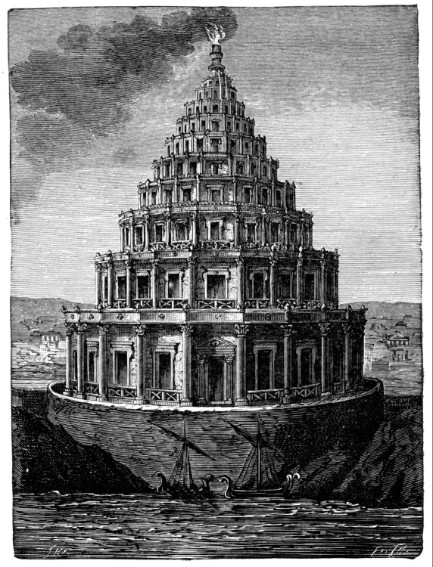
The Lighthouse of Alexandria, also known as the Pharos, was built by order of Ptolemy I Soter as a landmark to make Alexandria, Egypt, visible from the sea. It was between 380 and 490 ft. (115 and 150 m.) high and was the third tallest building in the world until its destruction. It was named after the island of Pharos in the middle of the harbor of Alexandria. It was connected to Alexandria by a bridge called the Heptastadion. In the 1st century A. D. it was converted into a lighthouse with a mirror to reflect sunlight in the day and a fire at night.
It had three sections. The first one was a square section with a central core. The second was an octagonal section and the third, a circular section. Roman coins show that it had a statue of Triton on each of the first section's corners and a statue of Poseidon at the top. Its walls were strengthened with molten lead as mortar in order for it to withstand the waves and that made it the second longest surviving wonder.
There was a spiral ramp in the first section to allow materials to reach the top and there were staircases all the way to the top. There was an observation platform on top of the first and second levels.
Tt was damaged in 956, 1303, and 1323 by earthquakes, and the last one made it inaccessible. In 1480 its ruins were used to build Fort Qaitbey by the Egyptian Sultan of the same name, and nothing was seen of it until, in 1994, some of the ruins of its foundation were found in Alexandria's Eastern Harbor and more ruins have been found with satellite imaging.